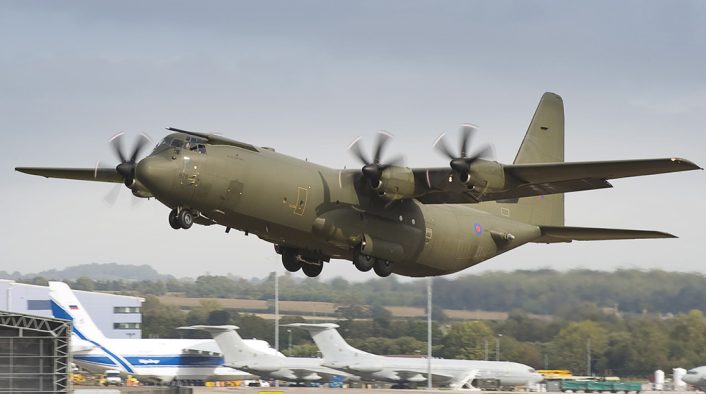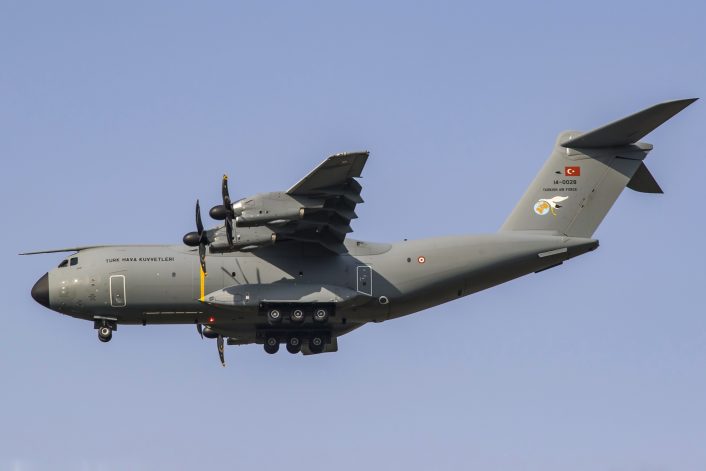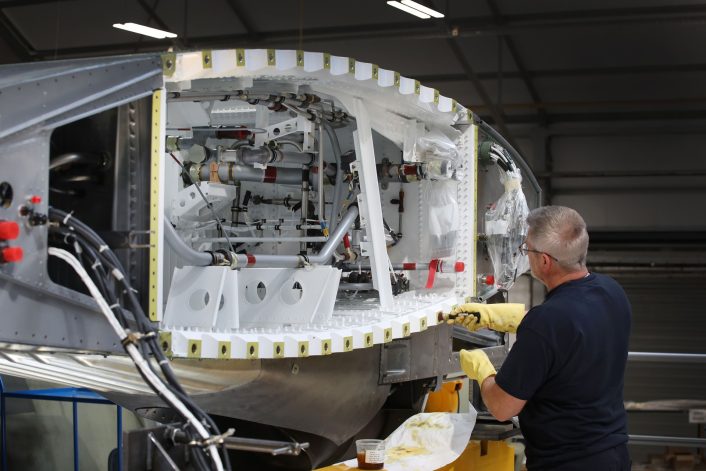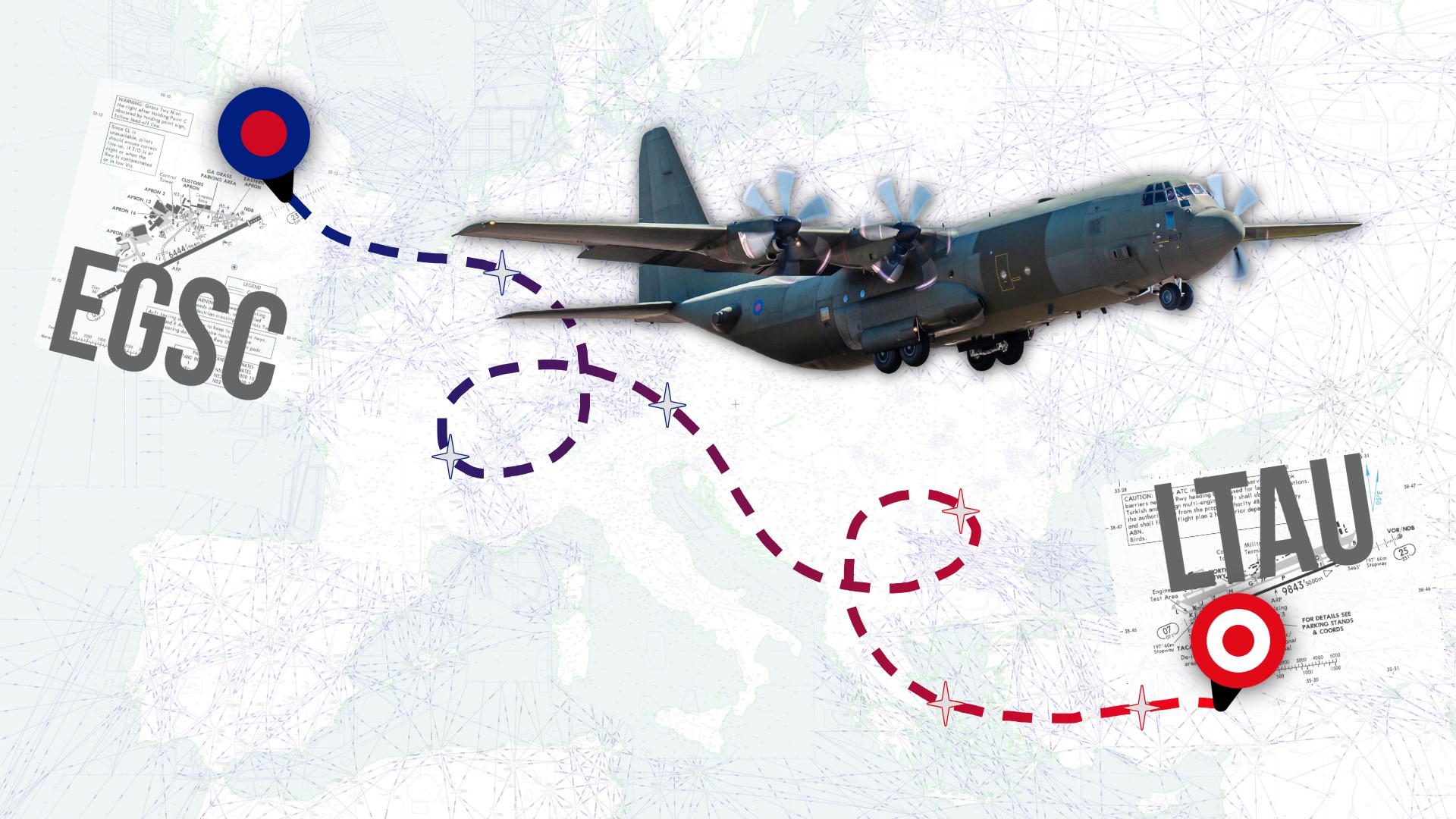A deep dive into Turkey’s purchase of RAF’s retired C-130Js and the future of its airlift fleet.
In recent years, Turkey has been steadily strengthening its air and defense capabilities. One of the latest signs of this ambition is the confirmed purchase of twelve C-130J-30 Super Hercules tactical transport aircraft formerly operated by the Royal Air Force (RAF). This acquisition marks not just a fleet expansion, but also a significant step in Turkey’s long-term effort to modernize its airlift capability and sustain its logistical autonomy in regional and international operations
A strategic deal between Ankara and London
The deal, signed earlier this year, involves 12 C-130J-30 aircraft that will be transferred to the Turkish Air Force after undergoing maintenance and upgrades by UK-based Marshall Aerospace. However, this isn’t just a simple resale, it’s a comprehensive program that includes: structural upgrades, training for Turkish personnel, and a gradual transfer of maintenance capabilities to Turkey.
The estimated value of the deal is around $740 million, and it fits into a broader context: the RAF’s decision to retire its C-130 fleet in favor of the Airbus A400M Atlas, and Turkey’s need to modernize its aging medium airlift fleet.
TÜRKİYE, C-130J UÇAKLARI İÇİN MARSHALL AEROSPACE İLE ANLAŞMA İMZALADI
Millî Savunma Bakanlığı, Türk Hava Kuvvetleri envanterine katılacak 12 adet C-130J Super Hercules uçağı için İngiltere merkezli Marshall Aerospace ile uzun süreli bakım ve destek sözleşmesini imzaladı.… pic.twitter.com/4OzdLudZ4l
— SAVTEK Dergi (@savtekdergi) October 20, 2025
The C-130J-30
The C-130J-30 Super Hercules is the extended-fuselage variant of Lockheed Martin’s proven C-130J tactical transport aircraft, developed to deliver greater payload capacity and range while retaining the rugged versatility of the Hercules family. It is equipped with advanced digital avionics, a fully integrated glass cockpit, and four high-performance Rolls-Royce AE 2100D3 turboprop engines driving six-bladed composite propellers, which enhance fuel efficiency, climb performance, and reliability.

Compared to the standard C-130J, the C-130J-30 features a fuselage lengthened by approximately 4.6 meters, enabling it to carry up to 128 fully equipped troops, 92 paratroopers, or 19 tons of cargo, depending on mission configuration. The aircraft’s ability to operate from short, semi-prepared, or unpaved runways makes it ideally suited for tactical airlift, humanitarian relief, medical evacuation, and special operations missions.
The actual Turkish Air Force transport fleet’s status
The backbone of the Turkish Air Force’s transport and logistics operations consists of a mixed fleet of A400M Atlas and C-130 aircraft, operated respectively by 221 Filo and 222 Filo at Kayseri Erkilet Air Base, with C-160 Transall and CN235 aircraft supporting secondary missions.
The C-130 was initially operated in the B and E versions. During its operational life, the aircraft received updates culminating in the ERCIYES modernization program of 6 C-130B and 13 C-130E, signed in 2006.
With the delivery of the first updated aircraft in 2014, the program re-designed the cockpit human interface to a modern standard introducing Digital Cockpit features such as Multi-functional Displays, Central Displays Units, Multifunction Central Control Computers and a series of systems, such as GPS and advanced Flight Management Systems, to support the latest international navigation requirements. Tactically speaking, the aircraft received modifications to allow day and night missions and to permit a better integration in a modern warfare contest with the introduction of MIDS Terminal and Link-16 Tactical Data Link System.
The new 12 ex-RAF C-130J-30 will support the existing fleet of C-130BM/C130EM (new designation received after the modernization program) that are expected to operate until 2040.


From Lyneham to legacy, the story of the RAF C130J fleet
The Royal Air Force acquired the Lockheed Martin C-130J-30 in the late 1990s as part of a modernization effort to replace its ageing fleet of C-130K Hercules. The decision to procure the new variant was made in December 1994, when the UK’s Ministry of Defense placed an order for 25 aircraft, including 10 standard C-130J and 15 stretched fuselage C-130J-30 version.
The first aircraft was delivered to RAF Lyneham on Nov. 23, 1999, and, by mid-2001, all 25 aircraft entered service. The C-130J-30 were designated as Hercules C.Mk4 in RAF nomenclature, while the standard-length aircraft were known as C.Mk5.
Throughout their service life, the RAF’s Hercules C.Mk4 fleet performed a vital role in tactical and strategic airlift operations. Initially based at Lyneham, the aircraft relocated to RAF Brize Norton in 2011, the UK’s main air transport hub, from where they were regularly deployed on both domestic and international missions. Maintenance and in-service support were provided primarily by Marshall Aerospace and Defence Group in Cambridge, which had maintained RAF Hercules aircraft since the late 1960s.
Despite their proven performance, the RAF began planning for their retirement in the 2010s as part of a broader effort to restructure Britain’s air transport capability in favor of the Airbus A400M Atlas. The final C-130J-30 aircraft were officially withdrawn from service in June 2023, marking the end of more than 50 years of Hercules operations in the RAF.
The acquisition and upgrade process of the ex-RAF aircraft.
Under the terms of the agreement, the twelve ex-RAF aircraft will undergo a comprehensive refurbishment and modernization program before their delivery to Turkey. The work is being carried out at Marshall Aerospace’s facilities in Cambridge, where the aircraft have been stored since their withdrawal from Royal Air Force service in 2023.
Each airframe is undergoing detailed structural inspections, corrosion control, and fatigue assessments to ensure full operational readiness. Particular attention is being given to critical components such as the center wing box, which is known to experience fatigue in long-serving Hercules airframes. These sections are being replaced or reinforced as required. The aircraft’s avionics and mission systems are also being upgraded to guarantee compliance with NATO operational standards and to ensure seamless interoperability with existing Turkish systems.
A key component of the program involves comprehensive training for Turkish Air Force personnel. Pilots, loadmasters, and maintenance engineers are receiving both classroom and simulator instruction provided by Marshall Aerospace and Lockheed Martin specialists. This is followed by extensive practical training on the aircraft themselves. Once the first aircraft are delivered, Turkish teams will continue the process domestically under a “train-the-trainer” framework, allowing the Air Force to build a sustainable base of in-country expertise.
Deliveries of the refurbished aircraft are scheduled to begin in late 2026, with completion expected by 2028, following acceptance testing and certification by the Turkish Air Force.
In the later phases of the program, Turkish Aerospace Industries (TAI) and ASELSAN will play an active role in the integration process. They are expected to install national communication and mission systems that are compatible with those already introduced under the ERCIYES modernization program. This approach will ensure a standardized fleet architecture across Turkey’s Hercules fleet and lay the foundation for future local maintenance and upgrade capabilities
C-130 center wing box upgrade and life extension
The C-130 is renowned for its longevity, with some aircraft flying for nearly 70 years. However, even the sturdiest airframe experiences wear over decades of demanding operations. Critical components, including the center wing box, which connects the fuselage to the outer wings and bears significant flight loads, have defined operational lifespans, typically around 20 years. Once these limits are reached, replacement is essential to maintain airworthiness.


Lockheed Martin developed an enhanced service life center wing box that can extend a C-130’s operational lifespan by over 20 years. Replacing it is a highly complex process comparable to invasive spinal surgery, requiring specialist engineering knowledge, certified kits, and precision tooling.
Marshall Aerospace has pioneered this work outside the United States. The process involves removing surrounding components including wings, fuel systems, wiring, and plumbing, then safely detaching the old center wing box using overhead cranes. The aircraft’s main structures are inspected, and any issues are rectified before the new wing box is installed and connected. Modernized plumbing, wiring, and removable fairings are integrated to simplify future maintenance. Extensive ground and flight testing follow to certify the aircraft.
Since the 1970s, Marshall has completed nearly 80 center wing box replacements on legacy and current C-130 models, extending the combined service life of these aircraft by over 1,600 years. Their expertise has earned them recognition as the world’s first authorized Centre of Excellence for C-130 center wing box replacements.
Turkey’s choice to acquire the C-130J-30 a reflection on strategy and capability
Turkey’s decision to acquire second-hand C-130J-30s rests on a combination of operational, financial, and industrial factors.
The C-130J-30 deal offered unmatched value for money. Turkey obtained twelve refurbished C-130Js for about US $740 million total, including overhaul, upgrades, training, and support. This made the purchase an efficient means to bridge the gap between ageing C-130BM/EM and any future program.
Since Turkey has operated Hercules aircraft for over five decades, introducing the C-130J-30 maintains continuity in training, maintenance, and operational procedures. Turkish pilots and technicians are already familiar with the airframe, reducing transition costs and avoiding the need for major infrastructure changes.
The ex-RAF aircraft were already built and stored, enabling faster delivery than waiting for new production aircraft. This immediate availability ensures Turkey can sustain its tactical airlift capacity without interruption as older aircraft are phased out.
The C-130J-30 complements Turkey’s existing fleet. Its ability to operate from shorter, unpaved runways makes it ideal for special operations, humanitarian aid, and tactical resupply missions in austere environments.
The program fosters closer UK–Turkey defense cooperation. Through its partnership with Marshall Aerospace, Turkey gains access to expertise in C-130 maintenance, life-extension, and systems integration. This collaboration supports Turkish industry’s long-term goal of enhancing domestic sustainment capability and technological independence


